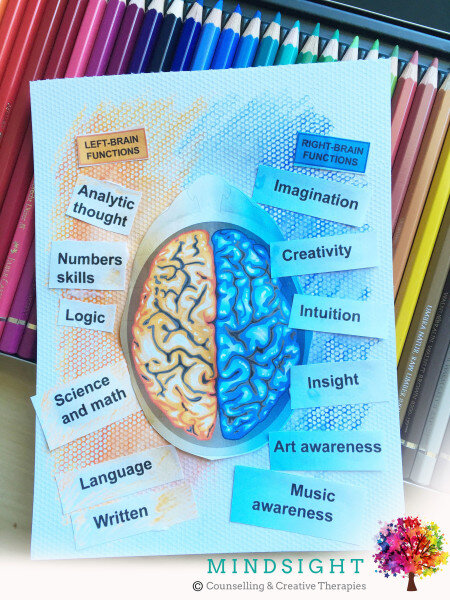The benefits of keeping a journal
Brain Balance
Ever since I remember myself as a ten years old I kept a journal. I remember how excited I got to receive a new pen from my parents for my eleventh birthday. Immediately, I decided I would only use it to write in my journal. Many years have passed since then, and I am less precious about my journals. My current journal has no “rules”. I write, scribble, draw, and stick images. In short, anything that comes to my mind I will make a note of.
Journaling can be a creative tool for people to understand themselves better and reflect on what is going on in their lives. Daniel Siegel, a professor of clinical psychology has done intensive research about the brain, states that journaling can be useful for all people: the ones who struggle to access their emotions, and for those who have trouble to balance their overactive feelings (Siegel, D., 2009). Siegel explains that the right side of the brain is responsible for all our visual sensations, emotions and social selves, where as the left side of our brain controls our linguistic, conceptual, and fact based analytical communication.
Research has shown that by naming emotions or feelings that one experiences, a soothing effect may occur in the brain. This is where journaling can help. We can use the left side of the brain to calm the right side by expressing our feelings in a journal.
Furthermore, Dr. James Pennebaker, a pioneering professor in the study of using expressive writing as a healing process, emphasizes that writing about troubling experiences may help to make those experiences more manageable. Pennebaker says, "When people are given the opportunity to write about emotional upheavals, they often experienced improved health.”
Writing about an image or event can transform experiences into words, and provide an important healing function. Writing in a journal may actually begin the process of disconnecting from disturbing thoughts and upsetting feelings into a written chronological timeline of sensory memories.
The journal can be your safe place to explore feelings and thoughts, help you understand yourself better and therefore can lead to better relationships with others. You can also try different methods of expression in your journal, such as drawing, doodles, collage and scribbles. You don’t have to believe you are creative in order to benefit from a creative journal. The point is to explore oneself, not to create a masterpiece!
So let your self go by picking up a pen or pencil and see where it takes you!
References
Siegel, D. (2009). Change your brain and your life. Scribe publications, Melbourne, Australia.
The university of Texas at Austin. James W. Pennebaker. ( 2005) Writing to heal. Retrieved January 28, 2016, from https://www.utexas.edu/features.

